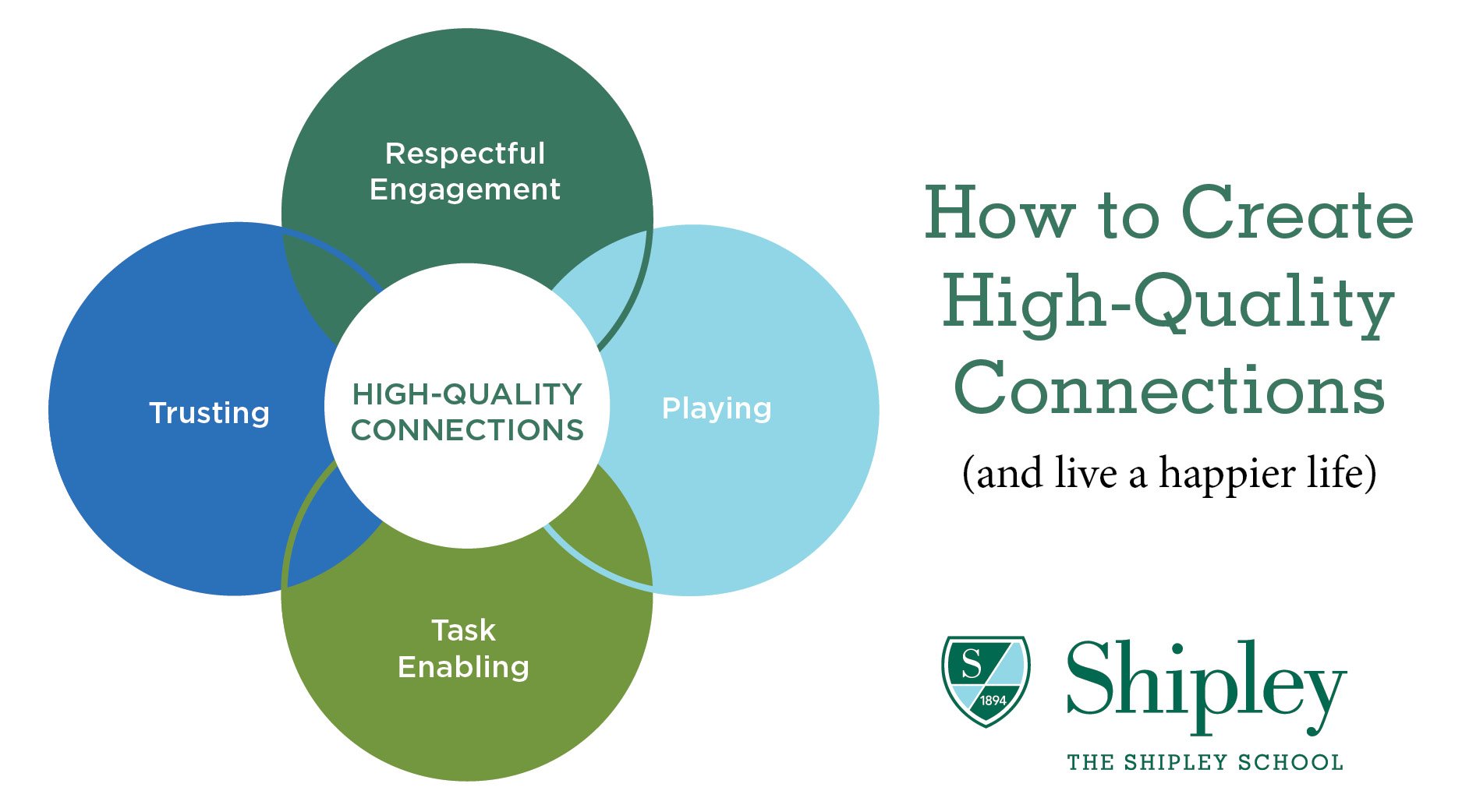Connections happen all around us. We make connections with family members, coworkers, friends, classmates, teachers, and strangers. But have you ever stopped to think about the quality or authenticity of those connections? In a world where we are always on the go, we might not think twice about simple interactions with others; but here at Shipley, we are striving towards fostering high-quality connections in our community every day, contributing to our collective and individual well-being.
High-quality connections are short-term interactions that are associated with creating positive and productive relationships. Research has shown that there are four pathways to creating high-quality connections. (Stephens, John Paul, et al. “High-Quality Connections.” Oxford Handbooks Online, 2011, doi:10.1093/oxfordhb/9780199734610.013.0029.) These pathways include:
- Respectful Engagement – Engaging another person in a way that sends a message of value and worth. This includes being present, showing empathy, and/or practicing active listening.
- Task Enabling – Helping or facilitating another person’s successful performance.
- Trusting – Conveying to the other person that you believe they will meet your expectations and are dependable.
- Playing – Participating in a game with another where the goal is to have fun.
When a high-quality connection occurs, there is a shared experience where all involved feel a mutual sense of connection and positive regard for one another. High-quality connections also leave those involved feeling energized and with a sense of vitality.
How can you create more high-quality connections in your life? Here are some strategies.
1) Show genuine curiosity in another person.
One way you can initiate high-quality connections with others is to demonstrate a genuine curiosity for that person. You can convey curiosity by asking open-ended questions, actively listening to that person, and engaging in active constructive responses. Some examples of sentence starters and questions that transmit curiosity can be found below. I encourage you to try these phrases and questions with your children, colleagues, partners, or anyone else you might encounter, and take note of their responses.
- “I’d love to hear more about…”
- “What were you feeling at that time?”
- “I’m intrigued by…”
- “What did you learn from this?”
2) Enter conversations without judgment.
Another way to build more high-quality connections in your life is to enter conversations without judgment. Judging others tends to be a natural inclination because our survival used to rely heavily on our ability to judge others and situations. Nowadays, we tend to be judgmental on a more personal level, rather than utilizing this skill for our survival. Some simple tips for mastering non-judgmental communication and fostering a high-quality connection include:
- Being mindful and aware of both your verbal responses and your nonverbal body language.
- Remaining calm and keeping an open mind.
- Listening fully before coming to a conclusion.
- Asking why to get a better understanding behind someone’s actions or thinking.
3) Treat every interaction as an opportunity to learn more.
Another way to create more high-quality connections in your life is to treat every interaction like a learning opportunity. Being open to learning and approaching conversations with this in mind will help foster meaningful connections that have long-lasting, positive effects on our well-being and help us learn something new everyday.
High-Quality Connections in Shipley's Lower School
If you attend one of our Positive Education Happenings this fall in the Lower School, you will have the opportunity to experience a high-quality connection with your child. Our colleagues are preparing students to engage with their parents in a meaningful way that leaves both parties feeling positive and connected through their shared experience.
In 2nd grade, students experienced high quality connections with their parents while discussing the importance of both giving and receiving positive and negative feedback, while in 5th grade, students and parents connected over moments of failure and traits of resilience.
In weeks to come, we will see our classrooms filled with teachers fostering high-quality connections for our parents and students, where all pathways are being activated.
We invite you to use these tips to try to bring elements of high-quality connections into your everyday life and notice how your relationships with others might grow as you become more attuned to the pathways towards connectedness.










